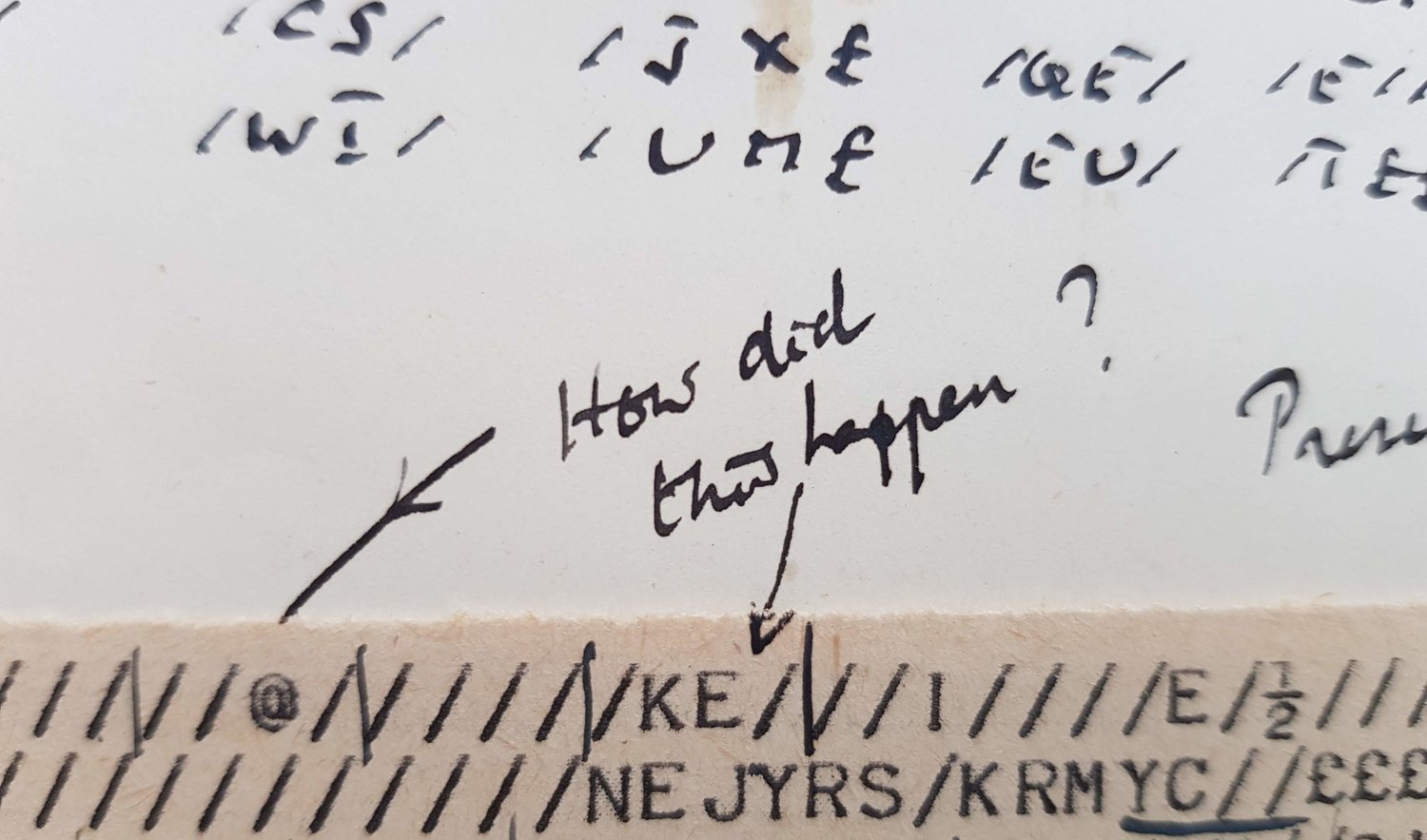A previously unpublished Turing letter on number theory
After I’d finished the research on Turing and was working on someone quite different I turned up a previously unpublished letter by Turing on number theory. For the record here it is.
The letter is in Trinity College Cambridge. Turing wrote it at home in Wilmslow to a Cambridge mathematician named Albert Ingham and it is undated though almost certainly written around Christmas 1951. That’s because it is a response to a letter Ingham wrote to Turing on 19 Dec 1950 and in turn it got a response on 2 Jan 1951: both of these letter’s are in King’s and online and they have been excellently put in context by Denis Hejhala and Andrew Odlyzko. The letter has long been catalogued as from Turing in the printed Trinity catalogue for AE Ingham’s papers, but they’ve never put that catalogue online and the two sides of the correspondence have not been connected before. (It’s one of those libraries where research can tend to the serendipitous.) I don’t think the editors of Turing’s Collected Works knew about it.
I’m not going to comment on the details of the maths so as not to bore you. Also because I don’t understand them. The rough problem is estimating how big a number now called Skewes’ number is. That was a characteristically ambitious problem for Turing: it turns out that Skewes’ number is the largest interesting number in the universe. (**)
Like all of Turing’s writings this letter is copyright by King’s College. Although the copyright in Turing’s published work expires at the beginning of 2025 you will need their permission until 2039 to reproduce this unpublished material for non-fair-use reasons. King’s are responsible and generous copyright holders and it’s not their fault that copyright law is quite badly broken.. I record my thanks to Trinity College Cambridge for allowing me to view this letter. and making it possible to reproduce.
(**) Skewes’ original bound was for the first sign change of the difference between the number of primes up to a point and a well known and very good approximation for that number given by a logarithmic integral. The characterisation of this crossing as happening at less than 1.397x10^316 was described by GH Hardy as requiring ‘the largest number that has ever served any definite purpose in mathematics’. There have been a number of versions of Skewes’ number related to the behaviour of the Riemann zeta function and the distribution of primes. But actually a decently robust definition would be the largest interesting number which has ever appeared in any mathematical research not intended to define a largest interesting number. And before you all write, I am aware of the proof that all numbers are interesting, though personally I am bored of 1729. Stanley Skewes was a South African-born mathematician who was a contemporary of Alan Turing’s at King’s. As well as collecting a PhD in number theory from Cambridge, Skewes also went home with a wife, Ena Allen, who Wikipedia tells us was a keen opera singer and the daughter of the head chef of King’s College. (Ancestry.co.uk suggests that Stanley already had a wife, Vera Rothkugel, in South Africa) Skewes pops up in the Turing timeline as a useful illustration of the mathematical culture at Cambridge in the 1930s: they used to row together in the King’s boat. Years later Skewes was at pains, when having to communicate a slightly delicate point about the two of them working on the same area, to remind Turing of the connection. Stanley seems to have taught at the University of Cape Town until at least the 1970s: he wrote a reference for the young JM Coetzee.
Ingham himself was a mathematician rather in the mould of his contemporary Max Newman: a grammar school boy, son of a boot machine operator, for whom a Trinity scholarship and then high Tripos results were the making of a career. As Burkill wrote ‘In the early 1920’s young men who had escaped or survived the war found a market, favourable to both buyers and sellers, in appointments at Cambridge or Oxford and other Universities. G. H. Hardy had a large say in the placing of pure mathematicians.’ In 1930 Frank Ramsey had become a genius by dying early and Ingham came back from Leeds to take Ramsey’s old job at King’s where he stayed a Fellow for the rest of his life: he would probably have been Turing’s undergraduate supervisor. Norbert Wiener, who would later parlay a brilliance with Fourier transforms into a bestseller via the creation of cybernetics, and rarely missed a chance to make everything about himself, gave a rare acknowledgement of Ingham as an inspiration. I don’t know why Ingham’s papers ended up in Trinity rather than King’s but I suspect it reflects Ingham’s opinion of where the prestige lay in Cambridge mathematics.
Ena Skewes, second left, at the International Congress of Mathematicians in 1932. Mary Cartwright, later one of the first chaos theorists, is at the far righr. From Wikipedia



